Cutting edge – the reinvention of collage

Roula Khalaf, Editor of the FT, selects her favourite stories in this weekly newsletter.
If one artistic medium could be said to capture the moment we are living through, it would be collage. Life, accelerated through our digital experiences and the constant social-media scroll of Instagram and TikTok, can, like collage, feel like a visual mash-up of body parts, advertisements, protests and news. And the medium is no longer seen as the less respected cousin of painting or sculpture in the contemporary art world. From American video artist Arthur Jafa’s scrapbooks exploring the representation of black creativity in culture, to Norwegian-Nigerian artist Frida Orupabo’s giant monochrome wall collages at 2019’s Venice Biennale, collage is becoming one of the most desired approaches on gallery walls.
As a medium, collage is quick, colourful and reactive. “Artists working with collage are making very interesting work highlighting the fragmented narratives around race and gender,” says Marina Ruiz Colomer, head of day sales at Sotheby’s in London. She has seen an increase both in the presence of collage in recent sales and in enquiries from collectors. “Aside from being beautiful, these works are very political,” she adds. The following collage artists are reworking the tropes, motifs and limitations of fashion imagery to look at history with new eyes and create work that is stylistically inventive, diverse and beautiful. At a time when history, society and culture are up for re-examination, scissors and glue feel like appropriate tools.

Johanna Goodman
A regular contributor to The New Yorker and Time, among other publications, Johanna Goodman plays with a familiar composition: placing people with tiny faces and feet, and huge voluminous bodies often made from found imagery, in a dramatic setting. The works resemble Victorian fashion plates transplanted to an alternative universe. “I love that the visual structure of my series has become a template for me to explore my personal feelings as well as so many different aspects of the human condition,” Goodman explains from her home in upstate New York. “I’ve used the series as a way to process or reflect culture, fashion, art history, news, politics, my travels and, most importantly, joy.”
Goodman, who began as a painterly illustrator before stumbling upon collage, reaches her eager audience directly, selling from her own website, but has also had life-size prints and originals (from $800) shown in gallery contexts. Her work has the kind of universal appeal that could leap beyond the art world into the mainstream. There are currently 412 pieces in her Catalogue of Imaginary Beings series. She sees no end in sight.
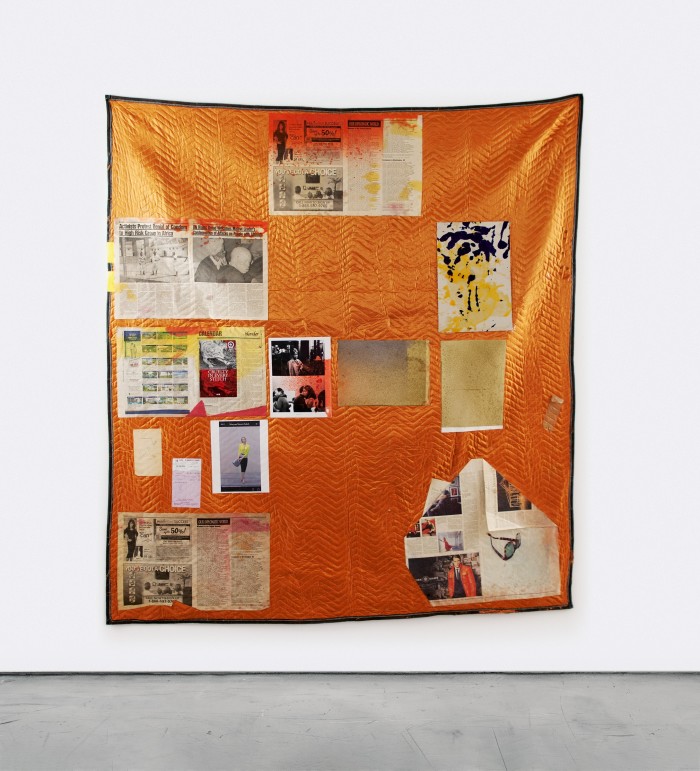
Eric N Mack
The New York artist creates sculptural installations that echo the spatial complexity of works by American icons such as Richard Serra – but with a patchwork of materials. Everyday items are at the centre of Mack's visual language. He works with clothes, sleeping bags and pegboards, layering them with paints and dyes, textiles and magazine pages that reference everything from the fashion industry to the representation of identity in popular culture. His approach “involves a particular type of tactility”, he says, “to allow the gaze to have many layers of meaning. That push and pull is really, really important to me.”
Mack is an alumnus of Cooper Union and Yale, and represented by Simon Lee Gallery and Moran Moran; his most recent major solo show was Lemme Walk Across the Room at the Brooklyn Museum, and he has had notable inclusions in group shows at the Whitney and Kunsthalle Basel. Next year will find him at Dublin’s Douglas Hyde Gallery. In every show, you’ll find pieces – monumental works made with a paint gun and a sewing machine – that expand the lexicon of collage into architectural intervention and three-dimensional painting.

Collier Schorr
Represented by 303 gallery in New York, Collier Schorr emerged into the art world in the late 1980s when the line between fiction and documentary photography was dissolving. Although she is best known as an artist who exists between the walls of the Guggenheim and the pages of Vogue, her collages had literary beginnings. “I started as a writer, and the way I edited was to print out the essays, cut them up and tape them back together,” she recalls. “I use collage when I want to alter the reality in a picture, and when I want to create a sense of friction between subjects, or a subject and a location. I like the way two things cut out make something else.”
Schorr’s central motif is an examination of identity, depicting figures that explore the representation of gender. Collage is a method that helps “strip away identifying aspects such as body or clothing”, she says. “It’s been super-helpful in illustrating the desire to alter oneself.” Her collages mix her own photographs with imagery from found books, resulting in narrative pieces that question how the body moves through the world.

Eva Kotátková
Czech artist Eva Kotátková has been a growing presence in the art world in recent years, with stand-out presentations in Massimiliano Gioni’s 2013 Venice Biennale, performances at the Swiss Institute in New York and inclusions in shows at Milan’s not-for-profit space Pirelli HangarBicocca. For Kotátková, collage is a methodology, not a simple technique. “It is primarily a way of dealing critically with images presented to us,” she explains.
Kotátková combines fragments of vintage images of human bodies, animals and industrial objects to create new forms. “My aim is not to recreate seemingly complete bodies, but to give them some kind of support that would allow them to stand, move or speak, or relate differently to their surroundings.”
Her work engages in the historic, visual and ideological nature of images, an approach that arose out of her experience growing up in pre- and post-Soviet eastern Europe. Her early works focused on “oppression, discrimination, and visible as well as invisible violence”, she says. What makes her take so interesting is how it exists far beyond the page, extending into performance-activated sculptures and installations made from found and fabricated objects.
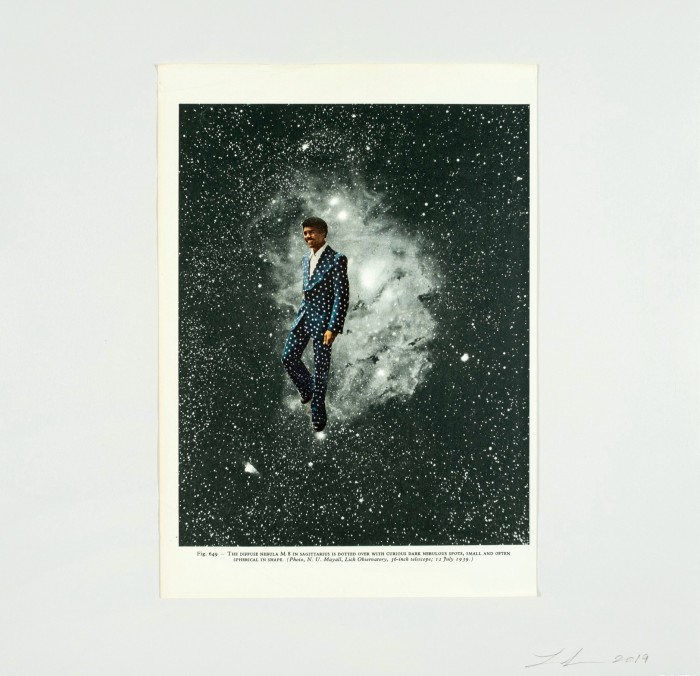
Lorna Simpson
Brooklynite Lorna Simpson’s work emerged from an interest in imagery taken from vintage Jet and Ebony magazines, titles published for the African-American market. “I became completely fascinated by the perspective – who it’s written for, the audience, the way things are written, historical context,” Simpson has said. Her signature works see fragmented female figures used to poetically examine ideas of identity, politics and representation.
Following solo shows at Hauser & Wirth in New York, and museum presentations at the MCA Chicago and the Whitney, New York, Simpson’s recent work is becoming more dramatic. Burning landscapes are incorporated into the heads of her female protagonists. This contemporary collage explores the turmoil of the American mindset and propels it into the big league.

Evren Tekinoktay
“Collage is a way of thinking, and a way of building. It works so well with my temper,” says Danish artist Evren Tekinoktay. She turned to the medium after attending trade fairs in Paris for her former lingerie shop. “I was handed catalogues of female lingerie models who all had half-open mouths,” she notes. “I have always been fascinated with historical ideas of women and womanhood. The idea of how a woman should be, behave and look makes me curious.” She took these eroticised, objectified characters and added graphical shapes to try to give them some dignity.
Recently exhibited at The Approach in London (which also represents collage artist John Stezaker), Tekinoktay’s work brings glam punk to films and neon works. Yet increasingly, her works are becoming more abstracted, with layered shape – and a very acid-pastel colour palette. It’s knowingly femme, with bite.
The Age of Collage vol. 3: Contemporary Collage in Modern Art, edited by Francesca Gavin et al, is published by Gestalten at €39.90 (gestalten.com)

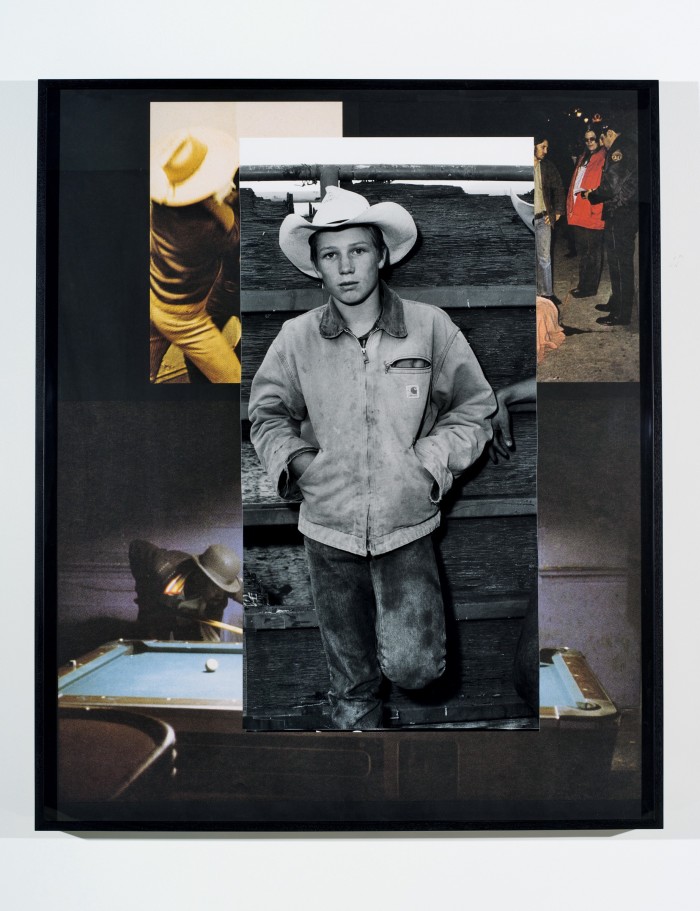


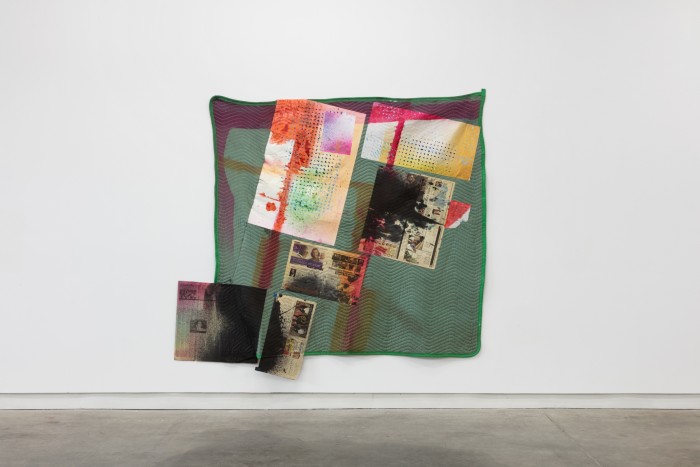
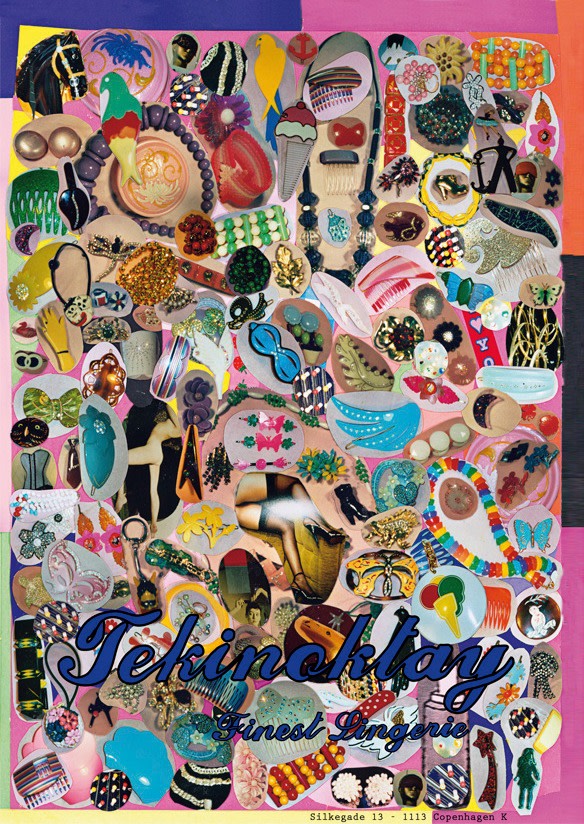
Comments